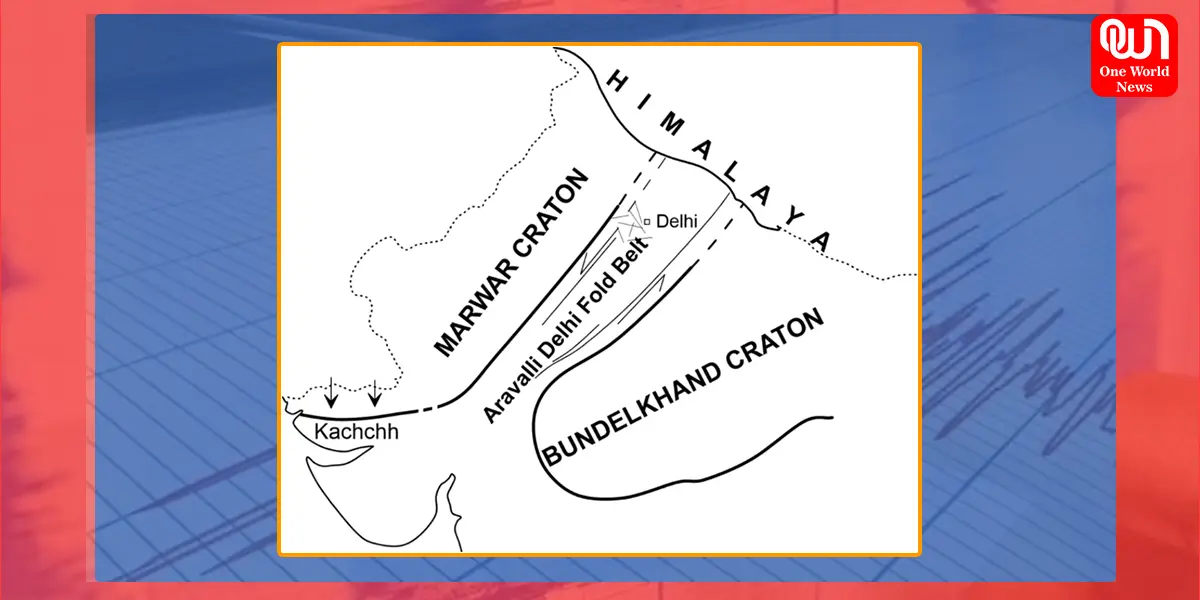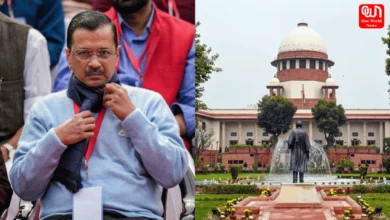Delhi’s Earthquake Risk: Proximity to Himalayas Amplifies Seismic Vulnerability Despite Lesser Local Fault Activity
But how earthquake-prone is Delhi? Research released by the Indian Academy of Science two years ago noted that between April and August 2020, the local network of the National Centre for Seismology (NCS) detected over 30 earthquakes in Delhi-NCR, which is home to over 28 million people. The highest intensity earthquake, with a magnitude of 3.8 in Jhajjar, erupted in Delhi-NCR throughout the past year, according to data. The latest occurred on Wednesday and had a magnitude of 2.7 with its epicenter in west Delhi. Such changes haven’t always been slight. Both the 1720 Delhi earthquake and the 1957 Bulandshahr earthquake had magnitudes of 6.5.
Read more:-Delhi-NCR Shaken: 6.2 Magnitude Earthquake
Himalayan Proximity Affects Delhi
The area does sit on several fault lines, such as the Mahendragarh-Dehradun fault line and Haridwar Ridge, where tectonic plates collide and create seismic activity. The actual danger was outside of the city. As stated by Dr JL Gautam, scientist and head of NCS, “Delhi’s vulnerability is brought on by its proximity to the Himalayas, which is an active earthquake zone.” “The main active fault lines are found in the Himalayan region. They are weaker in Delhi-NCR. Because of this, local earthquakes are small, but even small tremors in the Himalayan region can jolt the city.
Campi Flegrei: Fears rise of volcanic eruption near Naples after another strong earthquake https://t.co/5T9LVtGKSD the earthquake maps are covered in large red rings across the Himalayan mts while the U.S. is still in yellow rings the earth is moving. how long do we really have
— Sandra Frye (@Sandrafr79) October 4, 2023
About 250 km away from the seismically active Himalayan collision zone, Delhi is frequently shaken. Delhi is at moderate to high risk every time there is a Himalayan earthquake, such as that in 1803 in the Garhwal Himalayas (7.5 magnitude), 1991 in Uttarkashi (6.8), 1999 in Chamoli (6.6), and 2015 in Nepal (7.8), according to a 2021 assessment by specialists from the Union Ministry of Earth Sciences.
Bajhang earthquake update: One dead, 135 houses damagedhttps://t.co/oT28teYCq7
— The Himalayan Times (@thehimalayan) October 4, 2023
Delhi Faces Moderate Quake Risk
The report’s co-author, Dr V. K. Bansal, a visiting professor at IIT-Delhi and a former director of NCS, cautioned that the fault lines near Delhi might not withstand the stress and that a moderate earthquake of magnitude 5 or 6 couldn’t be ruled out. “The Himalayas contain several well-known faults, including the major central fault and the Himalayan frontal thrust. A magnitude 6-plus earthquake is felt in Delhi, but fortunately, Himalayan earthquakes are shallow, lasting 10 to 20 kilometres, so their energy has already diminished by the time they hit Delhi, according to Bansal. He noted that Tuesday’s 6.6 earthquakes in Afghanistan, which started at a depth of 157 kilometres, sent 30-second shocks to Delhi.
ADFB Earthquake Risk: Limited Data
Scientists acknowledge that whereas the Himalayan region has been intensively investigated, they know little about the Aravalli-Delhi Fold Belt (ADFB). “In light of the limited information, we analyze historical data to determine whether the current tectonic situation on ADFB can result in a significant earthquake. These findings suggest that a huge earthquake may not be appropriate for this area, but nothing up to a 5 or 6-magnitude earthquake cannot be ruled out. However, one of seven or higher shouldn’t exist, according to Dr. VK Gahalaut, director of the National Geophysical Research Institute in Hyderabad.
Read more:-Morocco Earthquake: PM Modi Conveys Grief
He also made a connection between Delhi’s groundwater and aquifer conditions and seismic activity. “We have seen that following the monsoon, Delhi experiences less earthquakes. We believe that the aquifers retain trillions of gallons of water because groundwater is recharged throughout the monsoon season. According to Gahalaut, this adds additional load that stabilizes the fault lines.
Liked this post?
Register at One World News to never miss out on videos, celeb interviews, and best reads.









